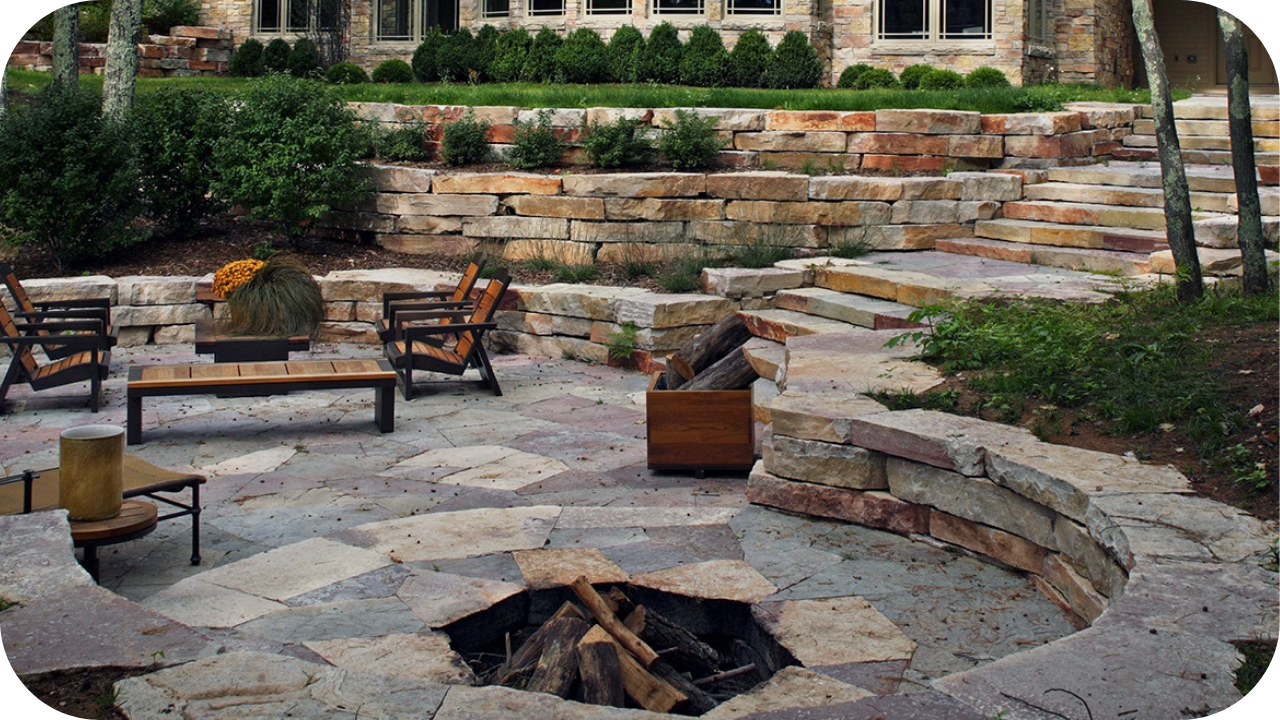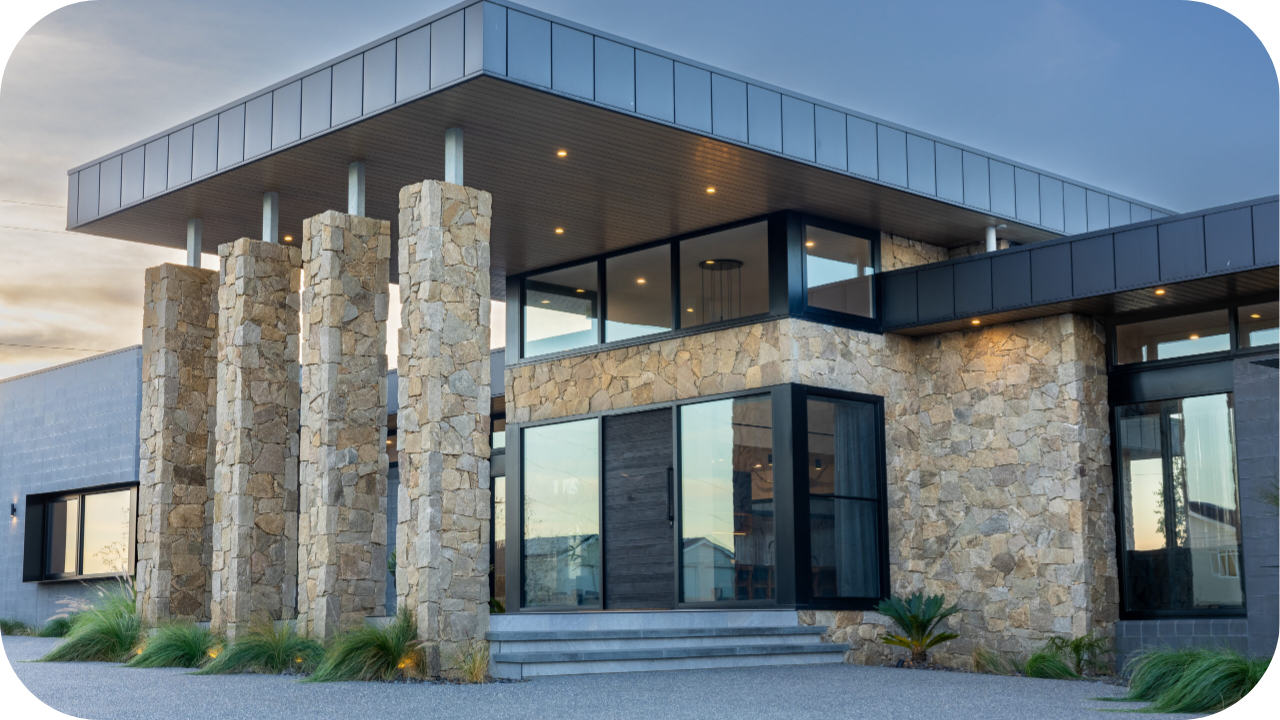
Sustainability is no longer just a trend. It’s a core consideration for architects, homeowners, and landscapers designing outdoor spaces that balance beauty with environmental responsibility.
Traditional landscaping materials often fall short, contributing to carbon emissions and resource waste. That’s where natural stone comes in. With its strength, longevity, and low environmental footprint, eco-friendly stone has become a smart solution for modern landscape upgrades.
Whether you’re designing a residential garden or a large commercial space, choosing the right stone can reduce impact while enhancing long-term value.
What Makes a Stone Eco-Friendly?
Not all stones are created equal when it comes to sustainability. Eco-friendly stones are those with a naturally low environmental impact throughout their life cycle.
This begins with responsible sourcing from ethical quarries that minimise habitat disruption and energy use. Stones with high natural durability and longevity reduce the need for replacement, cutting down on long-term waste.
Materials that require minimal processing, chemical treatments, or transport further lower embodied energy. Many eco-conscious stones can also be reused or repurposed at the end of their initial use, adding to their environmental value.
When chosen carefully, these stones help designers and builders create landscapes that are both visually appealing and aligned with long-term sustainability goals.
Top Eco-Friendly Stones for Outdoor Landscaping
To create an eco-conscious outdoor space that doesn’t compromise on style or durability, selecting the right natural stone is essential. Here are the top sustainable options to consider.
1. Granite
Granite is a robust, long-lasting stone that thrives in high-traffic outdoor areas. For walling, Buffalo Granite and Hotham Granite offer tightly fitted, textured finishes ideal for feature façades.
When used for paving, Charcoal Granite and Grey Granite provide stability, resistance to extreme weather, and sleek modern appeal, making them perfect for courtyards, driveways, or entertaining areas.
2. Bluestone
Bluestone is both strong and visually bold, suited for premium paving projects. Flamed Bluestone and Sawn Bluestone offer textured finishes that work well in high-traffic zones like garden paths and alfresco kitchens.
For classic detailing, Bluestone Cobbles provide slip resistance and visual interest, especially in heritage or European-style designs where durability and charm matter equally.
3. Limestone
Limestone adds timeless charm through its earthy tones and soft texture. Grange, Marrakesh, and Beloka Limestone create striking feature walls with depth and warmth.
In paving, options like Sienna, Brooklyn, and Stamford Limestone deliver varied tones and finishes from rustic to modern. These pavers remain cool underfoot, making them a smart option for sunny walkways and patios.
4. Quartzite
Quartzite’s high density and natural grain make it ideal for long-lasting outdoor paving. Andorra Quartzite, with its textured split finish, is especially suited for high-traffic areas like courtyards, garden paths, and pool surrounds.
It resists weathering, handles temperature shifts with ease, and adds natural character to sustainable outdoor spaces without sacrificing durability or visual appeal.
5. Travertine
Travertine brings organic warmth and natural elegance to any landscape. Classic Travertine and Sorrento Travertine are walling favourites, featuring soft textures and warm tones that suit both contemporary and classic facades.
For paving, Silver, Ivory, and Cashmere Travertine offer textured, non-slip surfaces ideal for poolside areas and garden paths with a timeless Mediterranean feel.
6. Quartz
Quartz is valued for its soft colouring and rugged texture, making it ideal for natural walling applications. Options like Beachport Quartz, Como Quartz, and Blanco Quartz deliver unique tones ranging from creamy beige to cool greys.
Their irregular shapes and natural finishes bring depth, warmth, and tactile appeal to retaining walls, garden features, and vertical facades.
Benefits of Using Natural Stone in Sustainable Landscaping
To achieve a sustainable yet stylish landscape, choosing the right natural materials is key. Here’s how natural stone elevates both performance and environmental impact.
- Regulates Outdoor Temperatures Naturally: Natural stone’s thermal mass helps balance heat during the day and release it slowly at night, creating more comfortable outdoor living spaces year-round.
- Prevents Soil Erosion and Supports Drainage: Strategic placement of stone along slopes and water paths helps control surface runoff, preserve soil integrity, and enhance natural water movement across the landscape.
- Reduces Long-Term Landscaping Costs: Stone’s natural durability minimises the need for ongoing maintenance, repairs, or chemical treatments, offering long-term cost efficiency and environmental benefit.
- Complements Native Plants and Site Features: Stone integrates seamlessly with surrounding vegetation and terrain, enhancing biodiversity while maintaining harmony with the garden’s natural character.
- Minimises Use of Chemical Treatments: Many stones naturally resist staining, algae growth, and weathering, reducing the need for sealers, cleaners, or harsh surface coatings.
- Enhances Aesthetic Longevity Without Fading: Natural stone maintains its colour, texture, and structure over time, ensuring outdoor areas remain visually appealing throughout the seasons.
- Promotes Water Efficiency in Design: When used with permeable paving or dry creek beds, stone encourages infiltration and reduces reliance on irrigation in water-sensitive gardens.
- Supports Eco-Conscious Material Sourcing: Locally quarried or responsibly sourced stones lower transport emissions and support sustainable practices within the building and landscaping industries.
Best Applications of Eco-Friendly Stone in Landscaping
To maximise the visual and environmental benefits of natural stone, using it in the right applications is key. Here are smart and stylish ways to incorporate eco-friendly stone outdoors.
1. Garden Edging and Borders
Natural stones like limestone and travertine are perfect for garden borders. Their weather resistance and subtle tones provide a clean edge that enhances structure while blending with surrounding greenery.
2. Retaining Walls and Planter Boxes
Granite and quartz are ideal for building sturdy retaining walls or raised planters. These stones provide strong support, natural drainage, and visual contrast that complements native planting schemes.
3. Walkways, Paths, and Stepping Stones
Bluestone and quartzite offer textured, non-slip surfaces ideal for walkways. These stones stand up to foot traffic while adding a timeless look to functional landscape areas.
4. Outdoor Entertaining Zones and Stone Seating
Travertine and granite perform well in alfresco spaces. Their durability, low maintenance, and natural surface cooling make them a smart choice for outdoor kitchens, fire pits, and seating zones.
5. Water-Wise Features Like Dry River Beds and Permeable Driveways
Limestone and quartzite can be arranged to create permeable, visually appealing surfaces. These installations help manage runoff while supporting low-water landscaping with a clean and cohesive finish.
Design Tips for Eco-Conscious Landscapes
To design a landscape that’s both sustainable and striking, careful planning and smart material choices are essential. Here are simple ways to enhance your space with eco-conscious intent.
1. Pair Native Plants with Natural Stone
Native vegetation thrives with less water and care. When combined with natural stone, it creates a balanced landscape that reflects the local ecosystem while reducing the need for artificial irrigation or fertilisers.
2. Use Permeable Ground Cover Options
Gravel and crushed stone allow rainwater to filter naturally into the soil. These materials reduce stormwater runoff and support sustainable drainage in garden paths, driveways, and between pavers in outdoor living zones.
3. Design Stone Features to Channel Water Efficiently
Incorporate natural stone into swales, French drains, or dry riverbeds. These features manage water flow effectively while blending seamlessly into the landscape for a functional and visually calming effect.
4. Select Light-Coloured Stones for Heat Control
Lighter-toned stones absorb less heat and keep outdoor areas cooler. This helps reduce urban heat effects around buildings, particularly in courtyards, patios, and high-sun garden areas.
5. Repurpose Offcuts and Smaller Stone Pieces
Make use of offcuts from walling or paving projects for small paths, edging, or artistic accents. It minimises waste and supports a more circular approach to stone selection and installation.
Tips for Sourcing and Installing Sustainably
Building a truly sustainable landscape begins long before installation. Use these smart sourcing and setup tips to protect the environment from the ground up.
- Choose locally sourced stone to reduce transport emissions: Prioritise materials from nearby quarries to lower fuel use, support regional suppliers, and decrease the environmental footprint of your landscaping project.
- Work with ethical suppliers who follow sustainable quarrying practices: Select partners committed to responsible extraction, proper site rehabilitation, and fair labour, ensuring your materials are not only beautiful but also responsibly sourced.
- Select stone sizes that minimise waste and offcuts: Choose dimensions suited to your design to reduce the need for excessive cutting, helping avoid unnecessary waste and making better use of available material.
- Combine stone with native greenery and permeable materials: Use stone alongside local plants, gravel, or sand to enhance drainage, support biodiversity, and create a balanced, low-impact outdoor space.
- Use non-toxic sealers and adhesives when needed: When applying sealants or adhesives, go for eco-friendly options that do not leach harmful chemicals into surrounding soil or water systems.
- Implement smart installation methods to extend lifespan: Ensure proper substrate preparation and drainage solutions to reduce maintenance needs and preserve the stone’s performance and appearance for years to come.
- Schedule regular maintenance using sustainable methods: Clean stone surfaces with natural products and water-based solutions instead of harsh chemicals to protect surrounding plants and water catchments.
Conclusion
Eco-friendly stones offer durability, beauty, and a lower environmental footprint for any outdoor space. From paving to walling, choosing sustainable materials ensures long-term value and responsible design.
Ready to transform your garden or project sustainably? Contact Splendour in Stone today for premium natural stone options that combine timeless appeal with eco-conscious performance tailored to your landscaping needs.
More To Explore

Can Buffalo Granite Withstand Extreme Weather Conditions?
Australia’s climate demands more from building materials. From scorching summers to coastal salt exposure and frost-prone winters, walls need strength that lasts. Buffalo Granite is

Safety Considerations When Cutting or Drilling Beachport Quartz
Working with Beachport Quartz isn’t just about precision cuts. It also involves serious health and safety concerns that cannot be ignored. This quartz-rich stone contains


